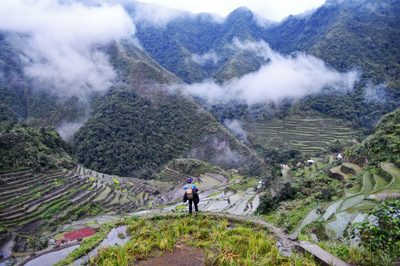Heritage Conservation
The conservation of the Ifugao rice terraces is tied with the conservation of tangible and intangible Ifugao heritage. The context where rice terracing is embedded revolves around the centrality of rice in Ifugao culture. From gender dynamics, to cosmology, to identity formation, rice and its production and consumption shapes the Ifugao worldview. We suggest that in the conservation of the IRT, long-term plans have to be in place to ensure continuity not just of the physical but equally of the intangible aspect of this cultural heritage. Implementing development initiatives in IRT communities involves understanding of the terraces not simply as structures of antiquity but as a living system of people, environment and customary practices. The Indigenous knowledge of the Ifugao on terraced agriculture, an all-encompassing system that includes rice fields, forests and people, is a major consideration in all development initiatives in terraces communities. UNESCO in its official description of the IRT states thus, “The maintenance of the living rice terraces reflects a primarily cooperative approach of the whole community which is based on detailed knowledge of the rich biodiversity of biological resources existing in the Ifugao agro-ecosystem, a finely tuned annual system respecting lunar cycles, zoning and planning, extensive soil and water conservation, mastery of a most complex pest control regime based on the processing of a variety of herbs, accompanied by religious rituals (UNESCO, ND).”
Through the work of SITMo and its community network, the IAP contributes to Ifugao heritage conservation by conducting ethnographic investigations, documenting the Ifugao agricultural system, and examining temporal ecological change.
Through the work of SITMo and its community network, the IAP contributes to Ifugao heritage conservation by conducting ethnographic investigations, documenting the Ifugao agricultural system, and examining temporal ecological change.






